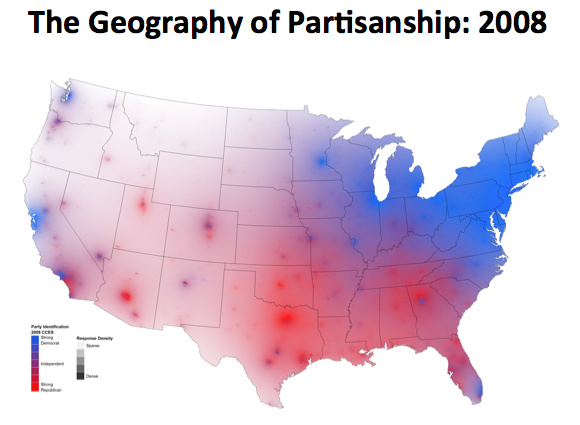Is it just Washington that is polarized, or are the people polarized too?
We asked academic experts, political scientists, historians, pollsters and policy analysts to contribute to an expert forum on this subject. The opinions reflect some differences in the academic community about how much and in what ways America is divided.
If you would like to contribute commentary to the expert forum, please send an email to [email protected]
USA TODAY: Political partisanship mirrors public
By Susan Page
March 6, 2013
Americans who blame Washington politicians for the polarization and gridlock of the nation’s politics might want to look in the mirror: Like the elected officials they decry, voters tend to automatically retreat into partisan camps even when they disagree with the party line on policy.
A USA TODAY/Bipartisan Policy Center Poll shows that the officials who have been unable to avert the automatic spending cuts known as sequestration ? the current debate centers more on who’s to blame for them ? in some ways reflect constituents who view the opposition party as deeply untrustworthy and its positions extreme. Though most Republican and Democratic voters say American politics are more polarized than the American people are, the findings indicate that on that they’re wrong.
Contributors
-
Alan Abramowitz
Alben W. Barkley Professor of Political Science at Emory University -
Karlyn Bowman
Senior fellow at the American Enterprise Institute -
Jeremy C. Pope
Associate professor of political science at Brigham Young University -
David Stebenne
Professor of history and law at Ohio State University

Widespread Divisions Constrain Actions of Political Elites
By Alan Abramowitz
The debate over polarization in American politics comes down to one fundamental question: Is polarization limited to those who comprise what Morris Fiorina of Stanford University has referred to as the political class?elected officials and a small set of activists?or is it evident among a large segment of the American public? The answer, in my view, is that polarization is now evident among a very large segment of the American public.
 ?
?
Media Coverage, Polls Skew Debate on Polarization
By Karlyn Bowman
Gallup recently pointed out that the difference between Democrats and Republicans in their approval of President Obama in his fourth year was 76 percentage points. In Bush’s fourth year, it was also 76 points. Gallup wrote that “it appears that highly polarized ratings are becoming the norm, as Americans aligned with both parties are apparently not looking much beyond the president’s party affiliation to evaluate the job he is doing.” Pew asked people in December whether the country was more divided politically than in the past and 80% said it was. Last year another pollster who looked at widely divergent Democratic and Republican perceptions of the economy’s health suggested that perhaps partisans were living on different planets.

Created by Professor Morris Fiorina of Stanford University and derived from 2008 Cooperative Congressional Election Study (CCES) data, the visualization above is a geographic representation of party self-identification. The map makes clear that Americans have sorted themselves by political party. Those who self-identify as Democrats live in densely populated areas in a few specific locations; self-identified Republicans tend to live in more rural areas spread across a wider geography.
 ?
?
What Separates the Public from Party Leaders and Partisan Activists
By Jeremy C. Pope
When discussing political polarization it is always a good idea to get clear about what we mean by the term “polarization.” The broad term can mean different things. One crucial dimension is the difference between elites and the mass public. Polarization in Congress and national politics is deep, making compromise very difficult. Polarization among the public however, is another matter entirely.
 ??
??
The Polarization Problem is Bigger than It Seems, and So is the Solution
By David Stebenne
The polarized American political system of today is only part of a larger story. Since the mid-1960’s, the country as a whole has become more divided, economically, politically, socially and culturally. A few examples should suffice to make that clear. First, income and wealth distribution have become more polarized since then. Second, the gap between the Democrats and the Republicans on fundamental issues has widened, too. Third, social-cultural gaps have widened in many areas, from patterns of family formation to attitudes toward religion and even popular entertainment. All of these developments are related, and they have become mutually reinforcing.
Share
Read Next
Support Research Like This
With your support, BPC can continue to fund important research like this by combining the best ideas from both parties to promote health, security, and opportunity for all Americans.
Give Now